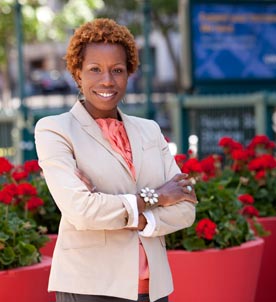
Tom Sobolik, www.tomsobolik.com
The field of community development is in the midst of significant change. Between budget cuts, rising costs, and the ever-growing numbers of families that need safe and decent places to call home, the challenges of creating and preserving affordable housing keep mounting. As an industry, we have made significant inroads, but new challenges always lurk around the corner. We need to be nimble and quickly adapt to an increasingly complex environment to meet the goal of providing housing for some of the country’s neediest families. As fascinating and thrilling as complex transactions and housing policy might be, the reason I started in this field is the people.
The industry got its start in many corners around the country, but when Enterprise Community Partners’ New York office opened in 1987, affordable housing as we know it today was virtually nonexistent. Through the combination of the innovative leadership of the early trailblazers including Jim Rouse, Bill Frey, Bart Harvey, and Doris Koo, public sector investment, and the commitment and pluck of community leaders, the city’s neighborhoods have been radically transformed.
I would like to support, and maybe seed, the next generation of neighborhood developers so we can continue to build, manage, and steward affordable housing. Technology, joint venture partnerships, new board members, and, yes, rightsizing should all be considered as the industry evolves. It is important to harness this change and think of ways to leverage new tools and resources to find ways to create and preserve safe, sustainable, and affordable housing. I am heartened by the interesting work coming out of housing authorities as they wrestle with an aging-in-place, very low-income population. I am equally encouraged by the sustainable practices being pioneered by more established and newcomer developers to build smarter housing for all people.
As one of the leaders of Enterprise’s preservation initiative, I am also working to ensure we’re proactively thinking about new capital and policy tools and solutions to tackle the problem of distressed multifamily buildings. No one player can solve the problem on his or her own. I’m fortunate to have the support of an industry committed to ensuring that all New Yorkers have safe, decent, affordable homes.
Just as it did at the start of the community development sector some 30 years ago, the industry finds itself facing public sector cuts and growing housing needs. The answers are complex and nuanced, but I believe the ingredients to start with are innovative people, new sources of private capital, and, well, pluck.





Comments